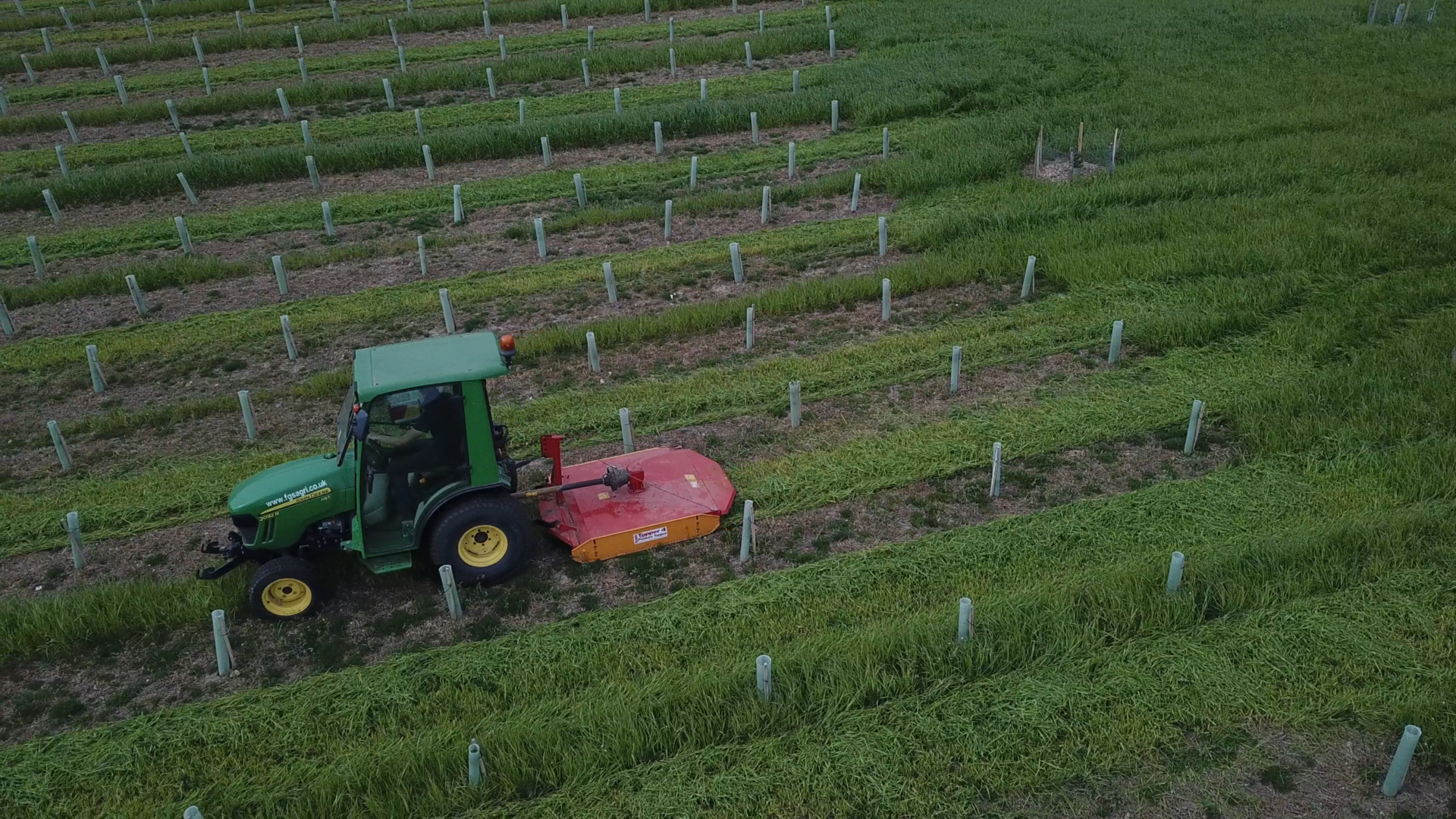We can undertake a broad range of grassland and vegetation management to suit different ecological, topographical and access restraints. We work closely with several ecologists and can assist with arranging watching briefs, site specific Preliminary Ecological Assessments and/or species-specific phased surveys. These working relationships with ecologists and understanding of site sensitive ecological constraints, helps to ensure a quality and efficient service, whilst preserving and maintaining habitats and species of ecological significance.
We have a diverse in-house fleet of vegetation management equipment ranging from tractor mounted flails, toppers, mowers and hedge cutters, to cut and collect machines, walk behind Scag flail mowers, conventional strimming and excavator mounted mulchers.
Flailing and Topping:
We can offer flailing and topping services on a range of equipment, from compact tractors with topper in width restricted areas, flailing with a high specification forestry tractor with reverse steer and crawler gear box for slightly steeper sites with thicker vegetation, to utilising a walk behind Scag flail mower for sites with restricted access and/or challenging topography.
Mulching:
We can provide a mulching service with our excavator mounted mulching unit, which can be used for clearing thicker, more established vegetation, including self-seeded trees and overgrown hedgerows. We have recently used this machine on a downland restoration project for a private customer, which involved Natural England and Kent Wildlife Trust consultation and advice. We cleared unmanaged scrub on downland banks to assist with restoring the chalk downland grassland meadows which have historically been home to wildflowers and orchids. We also provided fence repair and replacement services to allow the land to be managed with sensitive livestock grazing, thereby reducing the need for future mechanised involvement.
Strimming:
We can also undertake vegetation management using strimmers and brushcutters, with our trained and accredited operators. This approach is generally applied in more constrained and challenging sites, or for when a more controlled approach is needed under observation. We regularly complete phased vegetation reductions with strimmers and brushcutters under ecological watching brief, as part of a pre-commencement package in advance of development.
Direct Drilling:
We can undertake direct drilling operations with our 3m Moore Uni-drill. Our direct drill offers precise, consistent seed placement in a single pass. It is a 3m mounted drill with 32 coulters, which gives 9cm spacing. Direct drilling decreases soil disturbance, preserving the ecosystem in the soil. This strengthens the soil structure, helping to reduce compaction and conserve moisture, all of which have a direct correlation with crop yields. We can use the drill for precision application of wildflower and pollinator mixes as well as planting seed directly into existing grassland areas.
The Cut and Collect approach:
- Gradually reduces the number of cuts required
- Enables more traditional grass and wildflower species to establish
- Increases biodiversity
- Provides a food source for our pollinators
There are examples of this management approach being applied in Dorset between Weymouth and Dorchester. These trial projects have been a great success, reducing management cost and enhancing ecological biodiversity. The verges were cut two or three times a year, not 12, saving the council tens of thousands of pounds. The cost savings of managing roadsides in this way were dramatic, with annual budget for highway verge management dropping from nearly £1m to £650k in five years.

